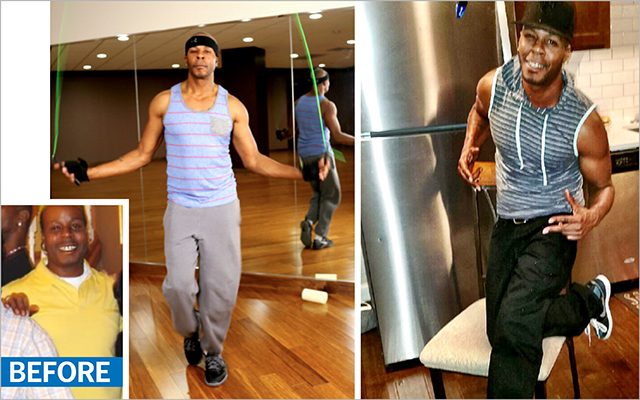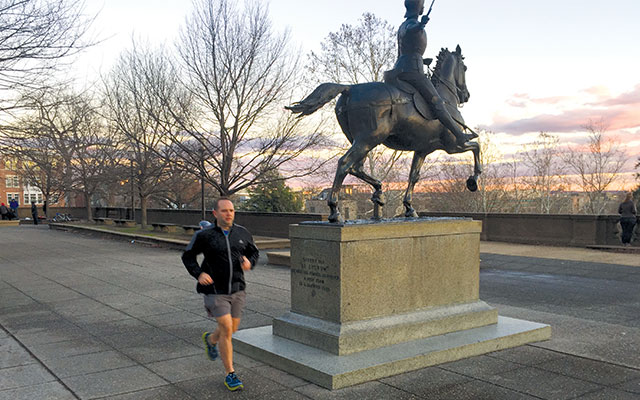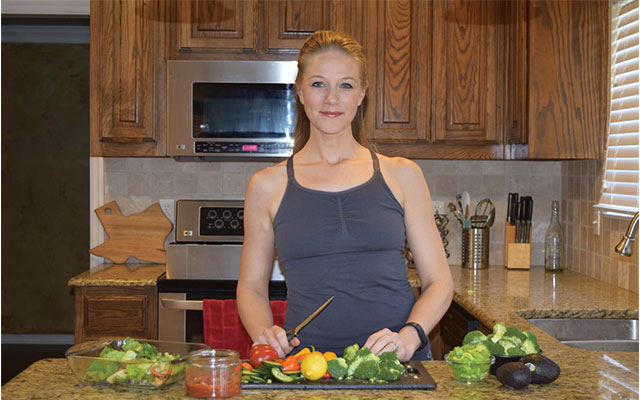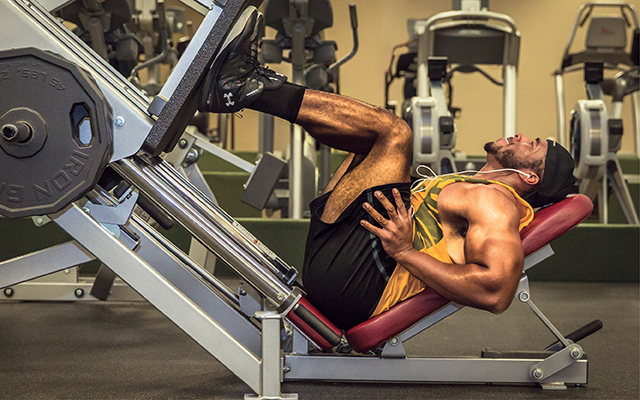I could have been a statistic.
I grew up with an abusive, alcoholic father and a workaholic mother. I spent years going in and out of foster care, where I had to learn to be self-sufficient. People often thought I was older than I really was because I was forced to grow up quickly in a tough neighborhood.
At 14 I legally emancipated myself from my parents’ custody and became an independent adult, responsible for my own decisions and well-being. It wasn’t easy, but I managed to get by on my own. I didn’t want anyone to know how difficult my situation was.
At that age, physical activity was one of the only ways I could escape my reality. In middle school, I got lost in track and field and roller-skating. But I was always good at the speed rope, which I liked because it fit my independent personality.
Then, when I was 19, I was the victim of a random shooting outside my apartment building in St. Paul, Minn. I was shot in the neck and kneecap, and doctors told me that I would likely always be disabled, and I might not speak again.
A Difficult Path
I left the hospital a week later in a wheelchair with a daily plan for speech and physical therapy at my home. I spent a couple of hours each day with a specialist, but I didn’t stop there. I also worked on it myself.
I had just graduated from a community-college program to be a nursing assistant, and I finally had a good job — one that required the physical skills necessary to lift people in and out of bed. I had really been getting somewhere in my life, and this shooting threatened to take it all away. I decided I wouldn’t let it happen. I’d come too far already.
My coping strategies probably go back to my early life. After all, if I needed or wanted something, I had to make it happen. I had to develop the confidence and skills to survive on my own.
I didn’t want to see months turning into years, not knowing what I really could achieve in my life. I decided to get as much out of therapy as I possibly could, and I chose to see myself as able-bodied — because that’s what I wanted to be. With that mindset, I devoted myself to an intense therapy program.
In about two months, I started to regain my speech, thanks to daily practice and perseverance. For several months after that, I walked with a cane, a brace, and a limp — all of which I eventually left behind as my condition improved.
I overcame my injuries, but life continued to throw me curveballs. By 22 I had been married and divorced. I was the single dad of two kids, and I cared for them while I went back to school and held down various jobs.
I didn’t have much support. I didn’t know any other single dads or anyone else with circumstances like mine. I wanted to do the right thing, but it was often difficult to know how.
I wasn’t taking care of myself because there was simply no time. I worked long hours. I started drinking a bit too much and eating fast food too often. Over the next 10 years, I put on an extra 100 pounds. What had happened to that little kid who loved to run track and jump rope? He felt like a distant memory.
Not surprisingly, when my kids got a bit older and I was able to take stock of my own body, spirit, and social life, I didn’t like what I saw. I was feeling antisocial; I had no confidence. I hadn’t been a priority in my own life.
Jump Around
My survival mode kicked in; I knew I had to make a 180-degree turn. The extra weight needed to come off. I needed new friends, new hobbies, and a new attitude.
Everything had to change so I could focus more energy on my well-being. I cut some people off. Some drinks didn’t get poured. I was used to doing things on my own; this was no different.
I knew I needed to start working out, and right away I thought of the speed rope and the hours I’d spent with it as a kid. So I bought one and started jumping in my garage.
At first, I was just practicing and perfecting my jumps. It wasn’t easy being overweight, but I found that jumping didn’t aggravate any of my old injuries. I pressed on. Eventually, I devised trickier choreography to challenge myself, aiming to drop weight and build stamina.
I changed my diet, too. I started eating smaller portions and cutting some carbs, like removing the bread from the top of sandwiches. I was eating to fuel my time in the garage, so I was motivated to make healthier decisions.
Hard Work’s Rewards
About eight months into my garage routine, I joined the Life Time near my Rogers, Minn., home. I was ready to add cardio and weights to support my jump drills. That’s when I got a little validation for all the work I’d put in.
People at the club would turn their heads when I walked by; some asked if I was a dancer or a boxer. I’d been doing the work alone for so long, and it was rewarding to know that people wanted to know how I was doing it.
Eventually, through some connections I made outside the gym, I started getting modeling gigs. I’d gone from the overweight, antisocial guy to the one posing in photos for fitness gear — and I’d done it all on my own.
I now rotate my workouts each day: weight training for legs, arms, and back along with cardio and the speed rope. It’s an intense routine, but I love it; at the end of each workout, I look like I’ve been pushed into the pool.
I try to keep my routine really simple. I’m at the gym seven days a week. I stick to a healthy diet, eating clean and drinking plenty of water. Occasionally, I’ll indulge in a burger or some ice cream.
My new lifestyle doesn’t require anything complicated, and I wanted to share that with others in need of inspiration to make healthy changes. So I created Rapid Cord Fitness and a companion 30-minute workout DVD designed to help people with busy schedules reach their individualized, holistic fitness goals.
I picked up the speed rope again because it seemed like a way for me to turn my life around on my own. Ultimately, it’s what brought synergy to my workouts: It improved my stamina, strength, and conditioning.
I don’t want the rope to be old-school anymore; it’s something more people could benefit from doing! For me, it’s no longer an escape — it’s the cornerstone of my healthier, more active life.
Success Summary
Meet: Nick Williams, 38, fitness model and creator of the Rapid Cord Fitness philosophy.
- Big Achievement: Overcoming a difficult childhood and serious injuries to develop a healthier lifestyle and design a method to see it through.
- Big Inspiration: The day he looked in the mirror and was in tears about his appearance, he started working out. When he noticed people gathering at the gym to watch his speed-rope routine, he was inspired to create Rapid Cord Fitness.
- What Worked: Keeping it old-school. “Sticking with the jump rope builds agility and coordination, and it supports weight loss and muscle-mass gain,” he says. “That’s pretty much what everybody wants. It worked!”
- What Didn’t Work: Not making time for his own health and fitness; basing his nutrition around supplements versus whole foods and clean eating.
- Words of Wisdom: “It takes determination and discipline to change your life, but you have to stick with it! It takes a lot longer to see yourself as others see you.”





This Post Has 0 Comments